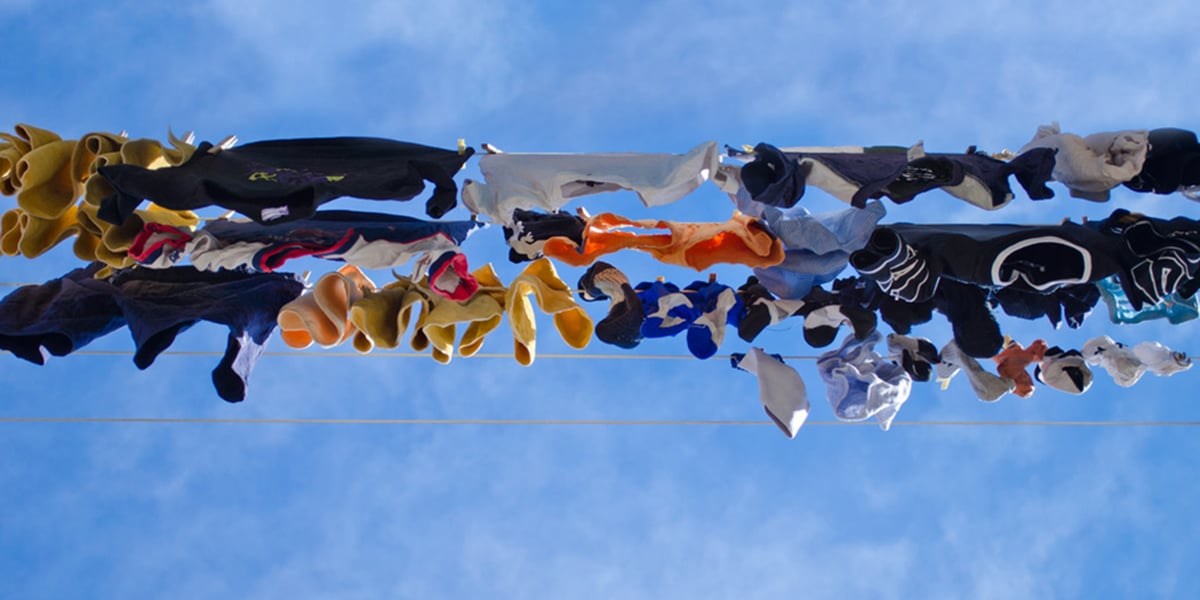Most of us only apply sunscreen to our skin that is directly exposed to the sun. We assume that the clothes we’re wearing protect us from the sun’s harmful UV rays, so there’s no need for sunscreen on covered areas. But could we be making an incorrect assumption? Maybe – not all clothes block out as much UV radiation as you may think. Some brands offer designated sun-protective clothing, and some offer sun-protective laundry aids, but to get the most protection out of our ordinary clothes, it’s best to opt for dark, tightly stitched fabrics.
The main factors influencing the protectiveness of a piece of clothing are the type of material from which it’s made, how tightly it’s knit, and the colour. Clothes made from polyester, lycra, nylon, and acrylic offer more protection than clothes made from cotton. Also, shiny, semi-synthetic fabrics reflect more UV radiation, offering more protection. Clothes that are dyed dark or vivid colours absorb more UV radiation than clothes that are light-coloured or pale.¹ UPF, or Ultraviolet Protection Factor, is a ranking similar to SPF for sunscreens that is used to indicate the amount of sun protection offered by clothing.¹ To put it into perspective, clothes with a UPF of 50 blocks out 98% of UV rays. A white T-shirt has a UPF of only 7, while a long-sleeve dark denim shirt has a UPF of 1700. Denim is said to be a “complete sun block”.² The Skin Cancer Foundation recommends a UPF of 50+ if you’re planning to be exposed to high levels of UV radiation.³
So what should you do if you want to protect your skin with clothes, but you don’t want to wear denim? You can try UV protective clothing. These items are made specifically to protect your skin from the sun better than ordinary clothes. Some types even contain zinc oxide and titanium dioxide, which if you’ve read our previous post, you’ll know these two ingredients are also found in some sunscreens.⁴ If you don’t want to purchase separate UV protective items, you can opt for a UV protective laundry aid. One brand, SunGuard, sells a laundry aid with Tinosorb, a sunscreen that transfers onto clothes while washing.
If you’re curious how much protection a specific fabric offers, try holding it up to a light source.¹ Even though you can’t see UV rays, this test gives a good indication as to how much radiation is able to sneak through the fabric since visible light and UV radiation are emitted together. If you can see light, it’s a good idea to add on another layer, whether that be a layer of clothing, or a layer of sunscreen. To stay safe under the sun, you can also use Sun Index. Available for iOS and Android, the free app lets you know how much sunscreen to apply. It also lets you know for how long you can stay outside with or without sun protection.
Sources:
- Gies, P. and McLennan, A. (2015). What Is Sun-Safe Clothing? Retrieved August 10, 2016
- Skin Cancer Foundation. (2016). Get in on the Trend. Retrieved August 10, 2016
- Gies, P. and McLennan, A. (2012). Every day and High-UPF Sun-Protective Clothing. Retrieved August 29, 2016
- Barton, A. (2016). Save your skin with sun-protective clothing. Retrieved August 10, 2016



